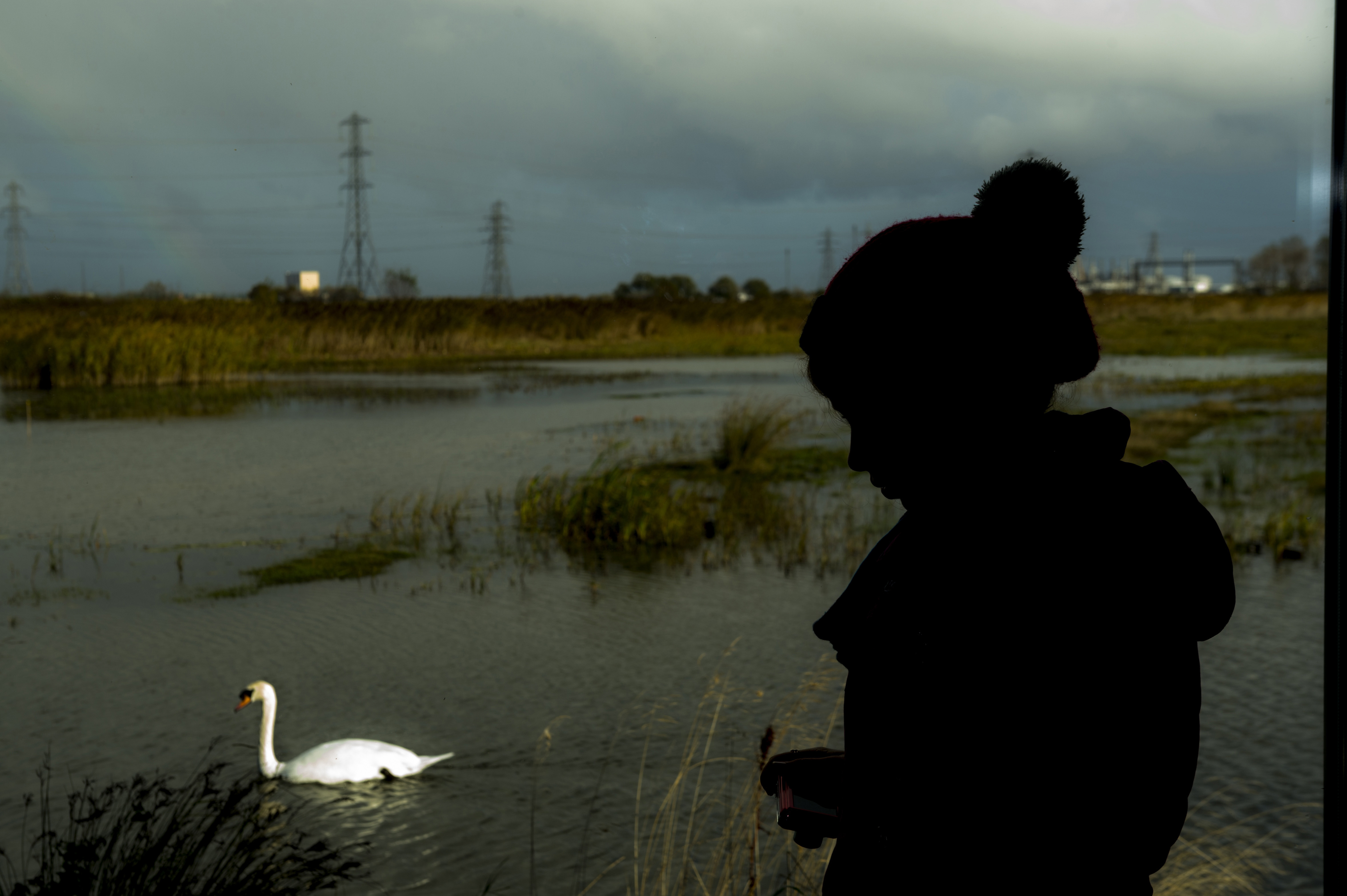Will two new power schemes transform Teesside’s landscape – or are they a waste of energy?
They have the power to make Teesside the heart of a new green industrial revolution, according to proponents of carbon capture and small nuclear reactors. But critics say they’re expensive and unproven, and an excuse to keep drilling for fossil fuels
Although it’s early days Teesside could yet host one of the world’s first power stations with commercial-scale carbon capture and be home to Europe’s first privately-built nuclear power plant. But if advocates, which include both Labour and Conservative MPs, believe the promised investment will be an important step in securing low-carbon energy, critics suspect the area is betting on the wrong technologies.
In February, Net Zero Teesside Power selected nine specialist contractors as it seeks to build a gas-fired power station with a carbon capture and storage (CCS) facility that could generate enough electricity to meet the average requirements of around 1.3 million homes.
Crucially, up to two million tonnes of CO2 could be captured at the plant and then stored in subsea storage sites beneath the North Sea.
The two companies that make up NZT Power, BP and Equinor, say the milestone of selecting the contractors brings forward the government’s drive to fully decarbonise the UK power system by 2035.
Also in February, Cumbria-based Community Nuclear Power (CNP) announced plans to build a privately financed nuclear power station on the North Tees Group Estate. The lack of taxpayer money needed for the station is not the only notable point here. CNP’s proposals for a plant to be up and running in ten years time depend on building four small modular reactors (SMRs) rather than one giant one.
SMRs are seen as easier and quicker to build, a way of replacing the country’s ageing existing nuclear plants, and vital to meet the government’s aim of producing up to 24GW of nuclear power by 2050.
CNP has contracted US energy giant Westinghouse to build the four SMRs, which will power the green energy and chemicals businesses planned for the North Tees Group’s estate.
BP vice-president Louise Kingham talks of “low-carbon electricity” for the carbon-capture power station, while CNP claims it will provide “clean and always-on” nuclear power. And the jobs the two schemes could create run into the thousands.
They’ve received cross-party support in Teesside, with Andy McDonald, Labour MP for Middlesbrough, offering “huge congratulations” to NZT Power for a “vitally important project”, and Jill Mortimer, Hartlepool’s Conservative MP, praising recognition of Teesside as the “heart of the new green industrial revolution”.
But there’s a long way to go before the power starts to flow – and when it does, say critics, it could be the wrong type of power.
CCS was first deployed in 1972 by natural gas plants in Texas and featured in the COP28 agreement on global climate change of last year. It has figured in UK government thinking on energy policy for more than 30 years. But it’s had a chequered past.
In 1989 then prime minister Margaret Thatcher convened a full cabinet meeting on climate change, considering a scientific paper that envisaged one large UK demonstration project being built by 2020. Little progress was made for two decades until the coalition government launched a £1 billion competition after its election in 2010, in which a Shell-SSE scheme at Peterhead in Scotland vied with Drax in North Yorkshire to demonstrate CCS at commercial scale.
In 2015, six months before the £1 billion was to be awarded, the government pulled the plug on it, following a row between the Department for Energy and Climate Change and the Treasury over total costs. The UK experience has been mirrored worldwide. Although CCS funding more than doubled between 2022 and 2023, according to BloombergNEF, a study last year of 13 CCS projects worldwide found that failed or underperforming projects “considerably outnumbered” successful ones.
The report, by the Institute for Energy Economics and Financial Analysis (IEEFA), added: “Using carbon capture as a greenlight to extend the life of fossil fuels power plants is a significant financial and technical risk: history confirms this.”
Andrew Reid, a partner at energy consultancy NorthStone Advisers and a guest contributor at IEEFA Europe, told The Teesside Lead that the NZT Power scheme has the potential to capture 9% of the 22 million tonnes the UK’s Climate Change Committee says should be captured by 2030. But he believes government support for the scheme is “worrisome”.
He said: “Attempting to reduce emissions by decarbonising fossil fuels and building new gas power stations presents a number of concerns.
“Firstly, it will increase the UK reliance on gas, which, as we have seen recently, leaves consumers vulnerable to price uncertainty and high costs. Add to this that carbon capture is expensive at between £74-£112 per tonne of CO2 to capture, according to the National Petroleum Council, and an additional offshore storage cost of £48-£116 per tonne, according to energy data company Wood Makenzie.
“It’s an incredibly expensive solution, which will rely heavily on taxpayer support and funding as standalone commercial models don’t work.”
He added that there was no guarantee NZT Power could deliver the claimed emissions reduction.
“There are currently no large-scale gas-fired power stations with CCS in operation globally and, according to the International Energy Agency, its technology readiness level is seven out of 11, which is some way off proving the concept.
“The likelihood of the facility capturing 95% of its CO2 emissions as planned seems unlikely in the short term.
“Overall, it’s high cost, technically high risk, while there are real concerns about it actually delivering the emissions capture.”
Other critics say CCS is an excuse to keep drilling for fossil fuels that really ought to stay in the ground if catastrophic climate change is to be avoided. But for Jon Gibbins, professor of carbon capture and storage at Sheffield University, that is to underestimate the scale of our energy needs.
“CCS is important to deliver net zero and then net negative and, if we are going to be tackling climate change, will remain in use for the foreseeable future,” he told The Teesside Lead.
He says the idea that we can transition from a world still using fossil fuels for 80% of our primary needs to net zero quickly enough to avoid dangerous climate change is a “utopian” one.
When the UK had lower targets for cutting emissions, as it did until 2019, CCS was “only really needed to keep coal and heavy industry in the mix”, said Gibbins. Now it’s aiming for net zero by 2050, “the logic made it a ‘necessity, not an option’, to quote the Climate Change Committee”.
With that logic in mind, Gibbins said proper knowledge transfer between publicly-funded projects and “a few simple precautions” mean “the next wave of CCS projects will achieve the necessarily high success level needed to encourage further investment and government policy support”.
At the same time as the government cut the CCS competition in 2015, it began to promote the idea of SMRs, like the ones planned for Teesside, partly because of the huge costs and time taken to build conventional reactors (that’s if they’re not cancelled, as one was in Cumbria in 2018). Construction started on Hinkley Point C, Britain’s first new-generation conventional reactor, in 2016 and is not expected to come on stream until 2031, at a cost of up to £35 billion.

Hinkley Point C in 2023
CNP aims to be not far behind from a much later start. SMRs need less cooling water than their bigger cousins, meaning a greater choice of potential sites for them. They are modular and can be factory-assembled, rather than on site, meaning lower costs, and they are easier to switch on and off when operational, meaning they can complement renewable energy sources.
In January, energy secretary Claire Coutinho said: “From large gigawatt projects to small modular reactors, the UK’s wider nuclear revival will quadruple our nuclear capacity by 2050 – helping to power Britain from Britain.”
Although privately funded, the success of CNP’s Teesside project is crucial to government aims.
“This project brings together Westinghouse’s proven technology and mature supply chain with our depth of expertise in nuclear programme delivery, in a region that is transforming its industrial landscape,” said Paul Foster, CNP’s chief executive.”
But critics of SMRs say they have the same problems as larger reactors – safety concerns, cost over-runs, what to do with radioactive waste, and the high cost per unit of power generated, especially considering the price of renewables is falling.
In written evidence to the Commons Science, Innovation and Technology Committee last year, Stephen Thomas, emeritus professor of energy policy at Greenwich University, said the nuclear industry’s claims for SMRs are “a mixture of unproven, misleading, and just plain wrong”.
Thomas wrote that it is “extraordinary” that the government was planning on SMRs playing an important role in its decarbonisation strategy, with their costs and reliability unproven.
Test reactors in the UK, Japan and China “suffered a wide variety of failures and unplanned shutdowns” and safety had not yet been fully tested by any regulator, he added.
NZT Power’s February milestone is just that – not even the start of construction. In a statement, it said the final award of contracts is subject to the “receipt of relevant regulatory clearances and positive final investment decisions by the projects and UK government, planned for September 2024 or earlier”, implying there could be many a slip ‘twixt the carbon capture cup and lip.
The first “commercial operations” won’t happen until 2027. For CNP, the next steps are the release of investment capital, and then community engagement.
The two schemes will generate more debate in Teesside before they get to generating power.
Subscribe to The Teesside Lead for our news, recommendations and investigations here.
You can also read the previous edition of The Teesside Lead here
The Teesside Lead is now on Substack.
Become a Member, and get our most groundbreaking content first. Become a Founder, and join the newsroom’s internal conversation - meet the writers, the editors and more.





